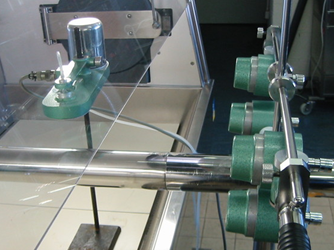Connection of a Class II/A2 Biosafety Cabinet to a Building Exhaust System.
In 2010, the National Sanitation Foundation (NSF) and the American National Standards Institute (ANSI) issued a revision to Standard NSF49. As a result of many discussions, the major revision was that Class II, Type A biosafety cabinets (BSCs) could no longer be directly connected to the building exhaust.
The committee first decided that the term canopy would be used in Annex E and throughout the standard for uniformity issues. In the past, terms such as thimble or air-gap had also been used to describe the canopy connection.
In the past most certifiers would typically recommend hard connections that could utilize an exhaust duct measurement to assure the correct inflow velocity.
NSF is very specific about inflow requirements (which are used to distinguish between subcategories of the Class II BSC). Using a direct inflow measurement (DIM) as the primary standard provides repeatable and accurate inflow measurements. EN performs inflow tests by measuring the airflow above the exhaust HEPA filter and back calculating the inflow (NSF A2 requires 0.5 m/s, EN requires 0.4 m/s).
The KI-Discus test is one area in which the European standard is arguably superior to the NSF49, since KIDiscus testing is the only way to validate, in the field, the containment of the cabinet.

Recent Articles
- Gnotobiotic facilities: writing inside isolators 4 April 2022
- Germ-free cage sterilization 24 January 2022
- Microbiota and its importance in aging 25 October 2021
- Procedural diversity and technical choices working with gnotobiotic mice in IVCs. (part 2) 27 September 2021
- Procedural diversity and technical choices working with gnotobiotic mice in IVCs. (part 1) 30 August 2021
DVC – Digital Ventilated Cage for digital vivarium

The DVC® is capable to provide novel insights and enhance animal welfare checks thanks to the automatic data collection directly from the cage level. Specifically designed DVC® board enables different benefits for the researchers and vivarium people.


